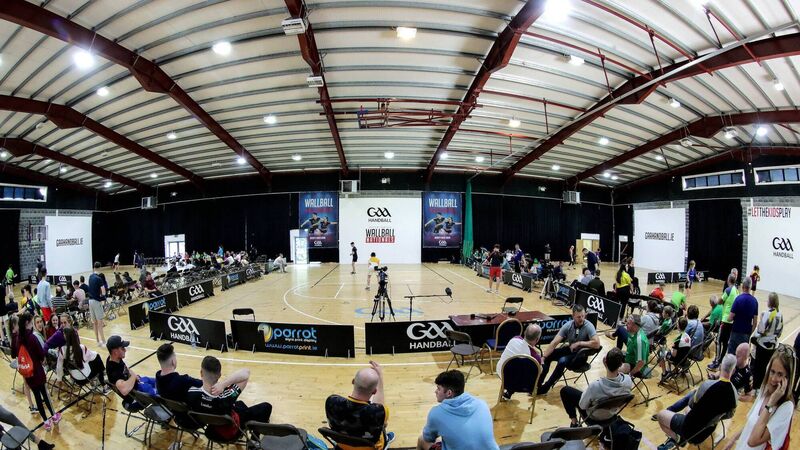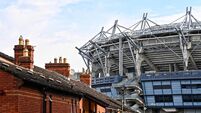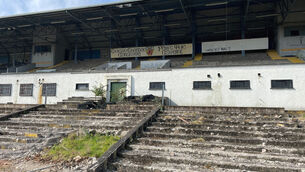The statement issued by the Ard Comhairle of GAA Handball after its meeting this week was stark in the manner in which it laid bare the pressure under which it was operating.
It read: “While we acknowledge that this is a stressful time for everybody and that certain items may be emotive under no circumstances is it acceptable for players or members to contact either volunteer members or full-time staff without going through the correct channels. Abusive text messages, emails or phone calls will not be tolerated and will be subject to disciplinary action.”
One of the emotive matters under consideration at the meeting was the completion of outstanding All-Ireland semi-finals and finals from the 2020 season.
It appears that indications that those finals were to be abandoned and never played had spread and had caused dismay.
The Ard Comhairle meeting announced this week that “everything possible will be done to endeavour to complete the outstanding finals and semi-finals from 2020 once restrictions allow.”
But there is no knowing when this limbo will end for indoor sport. It was all a reminder that the impact of Covid across the sporting world has been relentlessly disruptive. No sport has been left untouched. Right near the top of the list when it comes to sports in Ireland that have been disrupted is handball. The scale of the impact has been brutal.
Firstly, the triennial World Championships were due to be played in Ireland this year. Their inevitable cancellation means they have been lost to the country. More than that, Irish juvenile champions have lost the chance to compete for a world title at their age-grade. The World Championships will return to Ireland on another day but you cannot stay the clock on a person’s age.
Secondly, the new national Handball Centre at Croke Park was within weeks of opening when the first lockdown was announced last March. The old venue at Croke Park had become so run-down that senior national finals had been moved to other venues. No handball has yet been played in the new centre. And it is not readily apparent when a game will be played. In a neat expression of the manner in which Covid has colonised handball, the centre has been used by the HSE as a testing centre for the past year.
Thirdly – and in respect of the emotive issues referred to at the Ard Comhairle meeting this week – the annual All-Ireland 40x20 festival weekend was cancelled last March in the wake of the first lockdown. This was a disaster for a sport striving for profile. The centre-piece of the adult All-Ireland finals was to be the senior singles finals (Robbie McCarthy v Martin Mulkerrins and Catriona Casey v Martina McMahon). Not far behind was the minor final between the prodigious Kilkenny handballer (and hurler) Billy Drennan and the holder, Eoghan McGinnity from Monaghan.
These matches were to be followed later by the juvenile All-Ireland finals: Under 14, 15, 16 and 17, singles and doubles, boys and girls. In short, dozens of children have been thus far denied the chance to play in All-Ireland finals.
Apart from some outdoor handball, the competitive handball played during the summer and autumn was senior, minor and juvenile in 60x30, and in singles only. It seems difficult to understand precisely why, but doubles was deemed unsafe. The most high-profile casualty in all of this was the Senior Softball Doubles championship; this competition was started in 1925 and had been played for all bar three years during World War Two when there was a shortage of rubber.
Overall, during last summer, when the rest of the GAA’s activities resumed through the summer and autumn, handball was forced to remain largely dormant. As the National Manager of GAA Handball, John Kelly, wrote in the organisation’s recently published annual report: “It has been extremely tough to watch our outdoor sister associations return to some semblance of normality while we feel like we are being left behind. Our clubs and volunteer network have also been put under tremendous strain with the increased restrictions and the protocols that are now required to provide a safe environment for action to take place.”
And in a statement that contains multitudes, he continued: “It is fair to say that there has been a lot of frustration throughout the sport at perceived contradictions in restrictions with other sports.”
With the calendar of play decimated, handball clubs face an uncertain future. As Kelly said there was a grave danger of losing whole cohorts of players – particularly juveniles – from the sport if they cannot provide meaningful action for them.
This really matters. What will happen to that group of children who would ordinarily have started in the sport last year? Will they be lost to the game? And will those who have previously played return to the fold?
There are, of course, questions which face every sporting organisation. But the scale of disruption for handball – as well as for other largely indoor sports such as basketball – has been particularly acute. And when you are fighting for every inch of space in a person’s life, it is the more marginal sports that are more vulnerable.
Looking beyond Covid, there remain significant challengers for handball in Ireland. That handball is one of the GAA’s four officially-recognised games (alongside hurling, Gaelic football and rounders) offers it protection of a sort, even if it is clearly nowhere on the GAA list of priorities.
The last five decades has reduced its position in Irish life, even though this is a sport with a long and venerable tradition. The earliest known handball alley constructed in Ireland dates from around the 1790s and was located at Carnew, Co Wicklow. The building of dedicated handball alleys continued across almost 200 years. They became a focal point of social life in countryside and town. Great matches drew crowds and tournaments ran all day, against a backdrop of gambling and courtship and general revelry.
As historian Paul Fitzpatrick has written there was a great building spree of outdoor handball alleys in the early decades of the new Free State. The alleys thrived as sites of popular recreation, places where people could gather and play or watch. Or just sit. The picture of the ball alley with dozens of bikes scattered around its perimeter waiting to be reclaimed by their owners is one of the great iconic images of mid-twentieth century Ireland.
The last 50 years has seen the game move indoors. Handball alleys have been incorporated into the building of GAA social centres or into other multi-purpose sports centres around Ireland.
Recent years has seen some progress. For example, the spread of the Wallball (formerly One Wall) form of the game has been hugely positive. This form of the game has allowed a renewal of play in schools. On top of that, handball committed to the 20×20 Campaign, launched in October 2018 to create a measurable cultural shift in the presentation and perception of women’s sport in Ireland. The result has been not just growth in the number of women playing, but also an increase in the standard of play across the board.
And yet there are systemic challenges that leave the sport vulnerable. For all that there are areas in the county where the game prospers, there are many more where it is just a spectral presence. Its presence at juvenile level in Dublin, to give one instance, very low. The game is also struggling in major urban centres such as Limerick, Cork, and Waterford, as well as in many towns, large and small. Where are the development officers that are now essential to the spread of a modern sport?
The club structure is weak and governance at every level requires modernisation. Is the basic structure of Handball focused on running All-Irelands at the expense of developing a broad base of play and a stronger recreational game?
The media profile of the game also remains marginal. For more than seven years, GAA Handball has been streaming its major finals on ‘Facebook Live’. These matches reached a combined total viewership in 2019 of 348,000. The most watched matches reached an audience of around 10,000 people. But the place to be remains free-to-air television.
The opportunities presented by the new facility at Croke Park suggests potential for a more mainstream media presence for the game. Handball has had a presence in the GAA since 1886. It is beloved of its adherents. It will require huge support if it is to flourish in the post-Covid sporting world. A starting point is the playing of the delayed finals – but if all the GAA’s sports, it is the increasingly indoor game of handball that is most challenged.
- Paul Rouse is professor of history at University College Dublin.

Unlimited access. Half the price.
Try unlimited access from only €1.50 a week
Already a subscriber? Sign in








